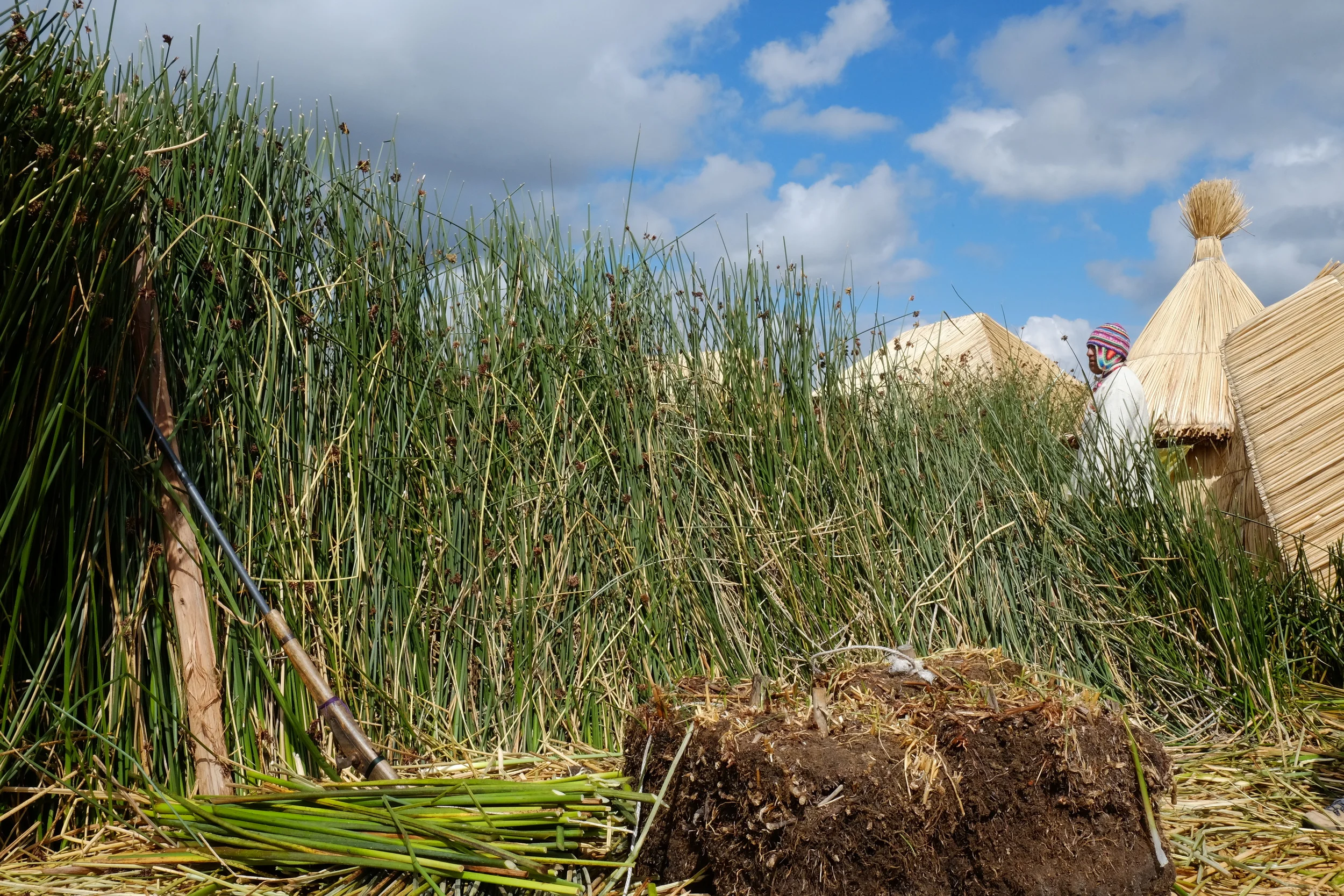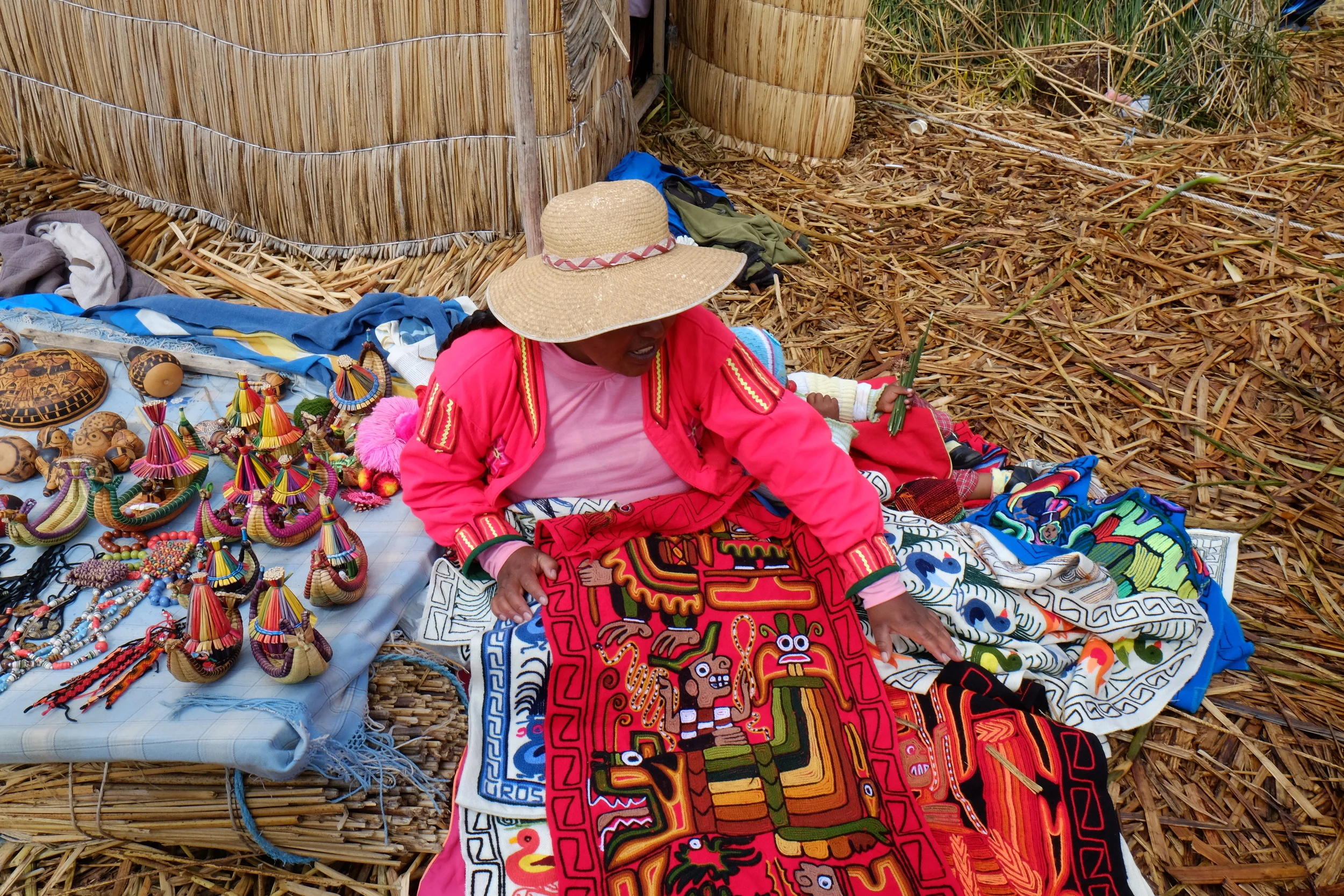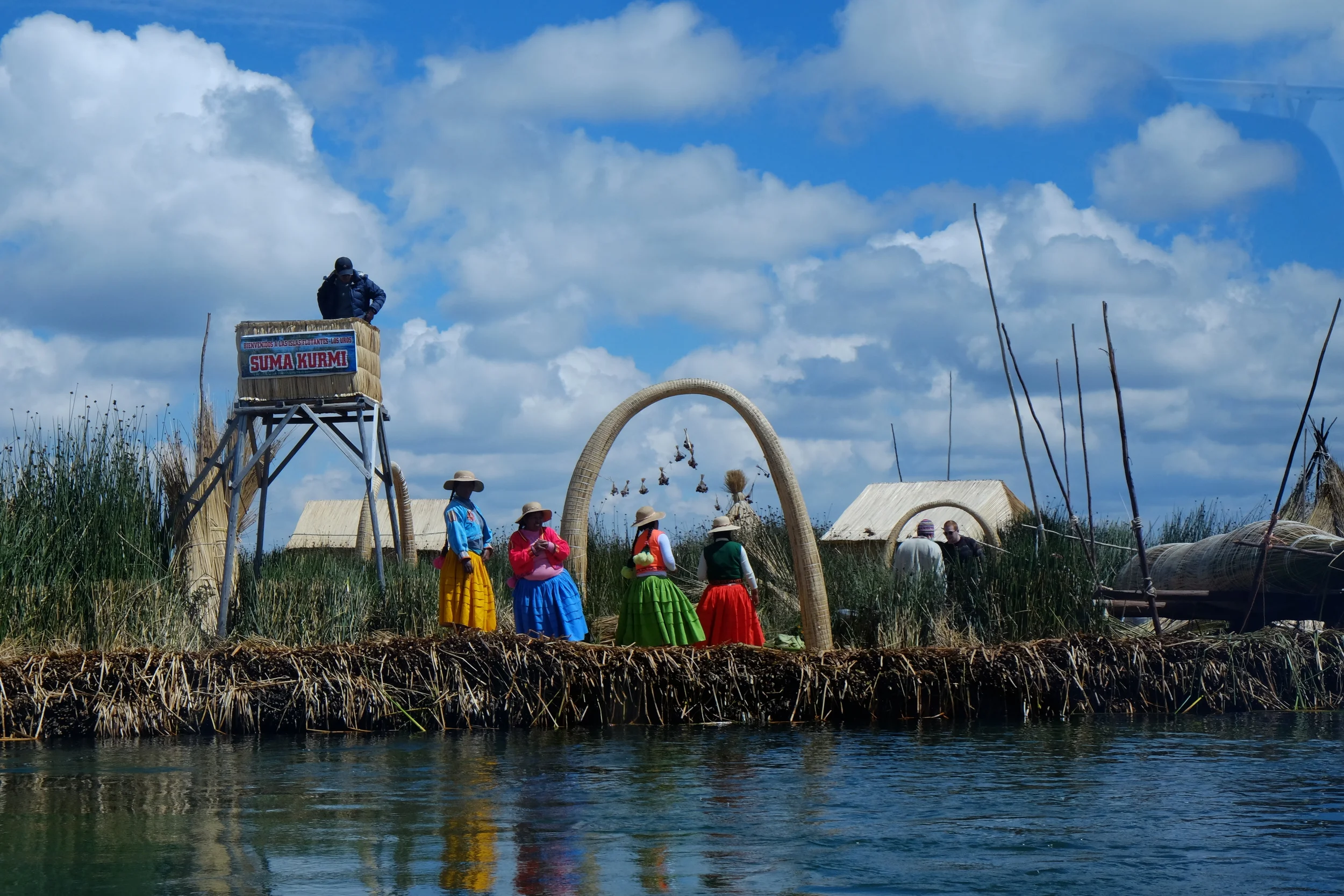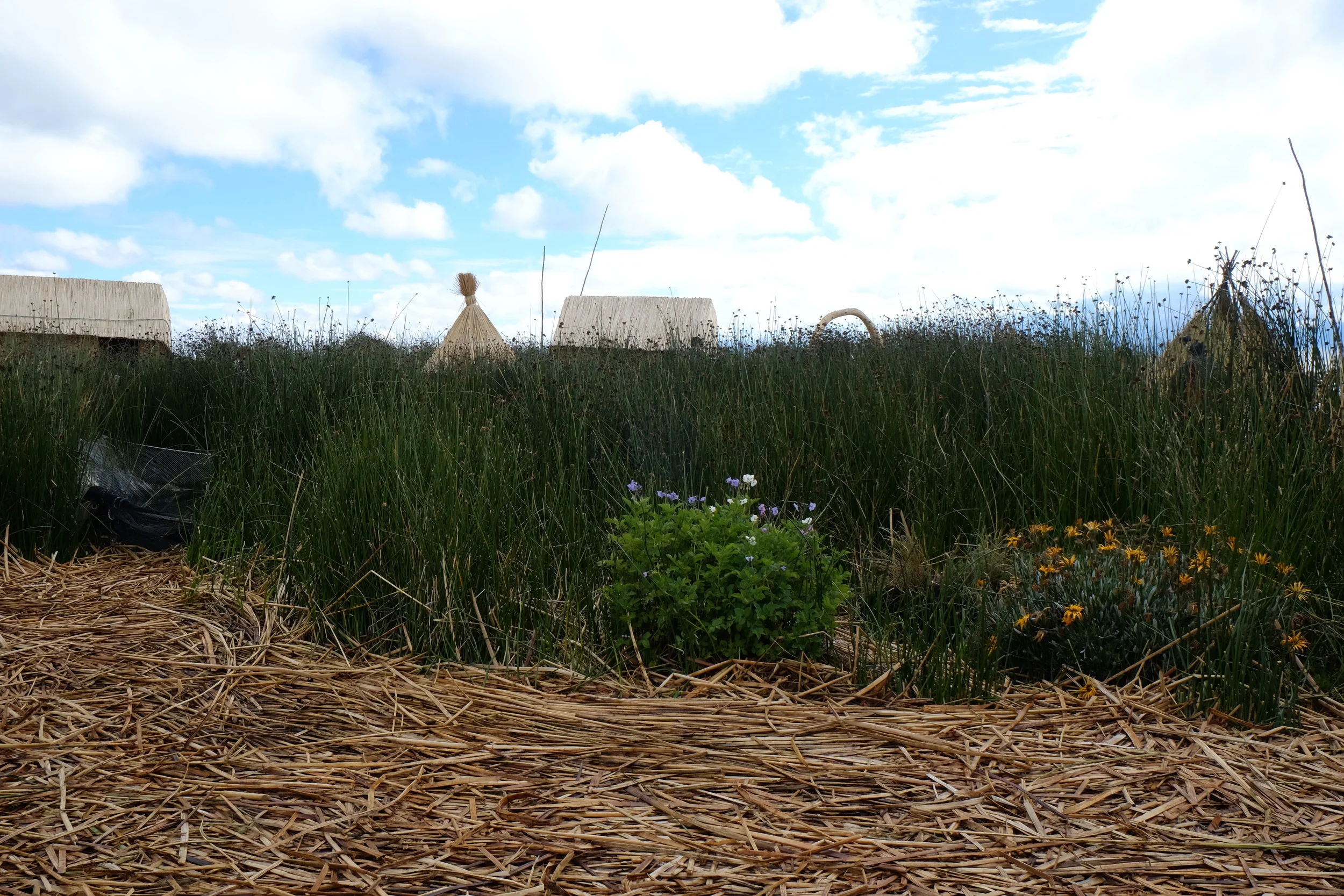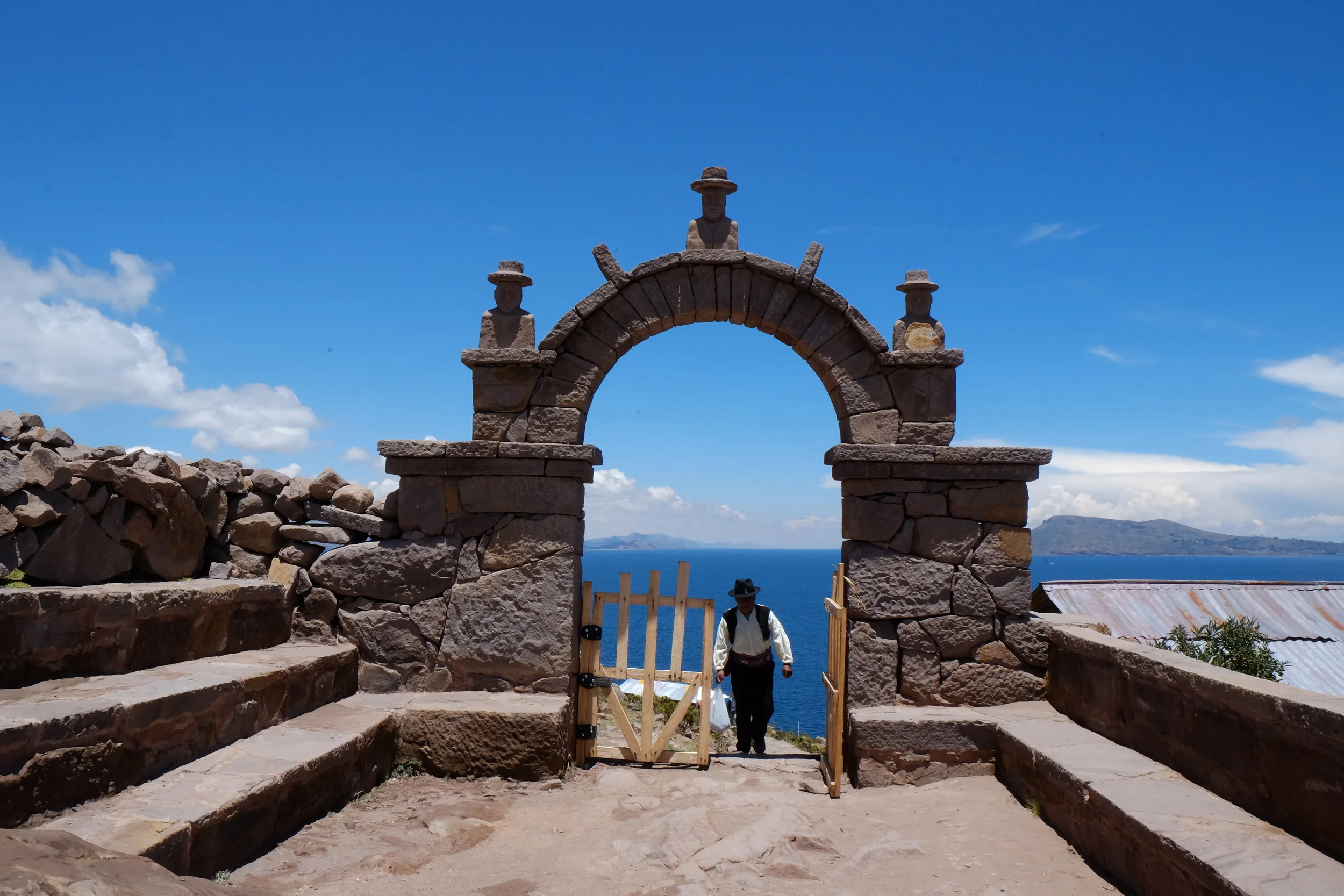Lake Titicaca is a massive body of fresh water that stretches between Peru and Bolivia and that is home to a few thousand people. The ongoing Peruvian joke is that the Titi part resides in Peru and the Caca part in Bolivia. The name itself is said to mean 'puma stone' because, with some creativity, the lake takes after the animal's form.
We made the 12-hour journey by bus from Cuzco to Puno and visited the man-made floating island of Uros the same morning we arrived. Four families, 15 people, live on this island. We found the women to be particularly lovely, dressed in their colorful skirts and vests, their long braided hair adorned with poms, their smiles wide and faces round, tinted by long exposure to the sun. The island is just one of many in the region and is made of a layer of roots measuring one meter in thickness and another layer of reeds in equal proportion. The reeds, along with fish, are a source of sustenance for these families who eat them directly from the lake. Once a month they also make a run into town for goods not as easily accessible. Electricity is solar powered. We didn't think at the time to ask about toilets and showers, though I've been quite curious since.

